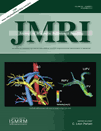Reproducibility of measurement of apparent diffusion coefficients of malignant hepatic tumors: Effect of DWI techniques and calculation methods
Abstract
Purpose:
To evaluate the effect of diffusion-weighted imaging (DWI) methods, apparent diffusion coefficient (ADC) calculation methods, and selection of b-values on the ADCs and the measurement reproducibility of malignant hepatic tumors.
Materials and Methods:
Nineteen patients with pathologically confirmed malignant hepatic tumors underwent breath-hold DWI (b-values = 0, 50, 500 s/mm2) and respiratory-triggered DWI (0, 50, 300, 500, 1000 s/mm2) twice on a 1.5 T magnetic resonance imaging (MRI) scanner. ADCs were calculated using a two b-value and/or a multiple b-value method. The reproducibility of the ADC measurements was evaluated from the intraclass correlation coefficients (ICCs) and the 95% Bland–Altman limit-of-agreement (LOA).
Results:
The ADCs were different according to the DWI methods (P = 0.040–0.282), ADC calculation methods (P = 0.003–0.825), and the choice of b-values (P < 0.001). The ADC tended to be more reproducible with use of breath-hold DWI (ICC: 0.898–0.933; LOA, 18.8%–24.0%) than respiratory-triggered DWI (ICC: 0.684–0.928; LOA, 15.0%–31.9%) (P = 0.008–0.122). For respiratory-triggered DWI, the multiple b-value method using five b-values had better reproducibility than the two b-value method for measurement of ADC (P = 0.009–0.221).
Conclusion:
The DWI method, ADC calculation method, and selection of b-values potentially influence the ADCs and the reproducibility of malignant hepatic tumors. ADCs calculated from breath-hold DWI are more reproducible than from respiratory-triggered DWI. A multiple b-value method may improve the reproducibility of respiratory-triggered DWI. J. Magn. Reson. Imaging 2012;36:1131–1138. © 2012 Wiley Periodicals, Inc.




